NEW HOPE, PA – The 100thanniversary of the freeing of the steel truss bridge that links New Hope and Lambertville is one week away
On Saturday, January 3, 1920, the second iteration of the New Hope Delaware Bridge Co. completed its sale of the bridge and adjoining properties to the states of Pennsylvania and New Jersey through a legal transaction in Philadelphia. The sale was facilitated by the Joint Commission for Elimination of Toll Bridges – Pennsylvania-New Jersey, a long-defunct predecessor agency to today’s Delaware River Joint Toll Bridge Commission. (News clippings of the bridge sale are attached to this press release.)
Published accounts indicate toll collections unceremoniously ended at the New Hope-Lambertville Bridge as soon as the bridge company conveyed its deeds to the states. The $225,000 payment the two states made for the bridge purchase was more than three times the amount of money (reportedly $63,818) it cost the bridge company to construct the steel-truss bridge superstructure after its wooden predecessor was destroyed in the “Pumpkin Flood” of 1903. Half of the old wooden bridge was built in 1814; the other half was a replacement for three spans swept away in an 1841 flood.
According to articles published in early 1920 in The Trenton Sunday-Times Advertiser and The Lambertville Beacon, factory whistles in Lambertville and New Hope were sounded during the afternoon of January 3, 1920 to mark the freeing of the bridge.
Efforts to free the bridge of tolls occurred off and on for over a decade. An article in the November 15, 1910 edition of the Trenton Evening Times explained the underlying impetus:
“The rapid growth of automobile travel has greatly increased the demand for free bridges, as not only the payment of the toll, but also the delays caused by the holdups at the toll gates are far from pleasing to the motorists At the Lambertville bridge every automobile is taxed 20 cents, each way, to cross. The farmers are another class who are up in arms against toll bridges. Every farmer who crosses the Lambertville bridge … is taxed 24 cents each way if he crosses with a wagon.”
(Note: a 40-cent roundtrip toll in 1910 would be roughly the equivalent of a $9 two-way toll in current-day – 2019 – dollars.)
Four Lambertville men figured prominently in the effort to free the New Hope-Lambertville bridge of tolls:
- Frank Barkley, who served as secretary to a state commission New Jersey created in 1908 to assess the feasibility and costs of freeing the privately owned toll bridges that operated a century ago along the Delaware River.
- Phineas K. Hazen, the editor/publisher of the former Lambertville Beacon newspaper and a charter member of the Joint Commission for Elimination of Toll Bridges.
- Assemblyman Oliver C. Holcombe, a local musical instruments merchant who authored legislative measures aimed at freeing the privately owned Delaware River toll bridges.
- Walter F. Hayhurst, a prominent lawyer who was appointed to the Joint Commission after Hazen’s death in 1917.
The bridge between New Hope and Lambertville was the third privately owned toll bridge along the Delaware River to be conveyed into public hands and freed of tolls.
The first bridge to be freed was the Lower Trenton Bridge (an iron bridge that preceded today’s steel bridge with the iconic “Trenton Makes The World Takes” sign). The Lower Trenton sale occurred May 31, 1918. The former Point Pleasant-Byram Bridge was the second private span to be freed of tolls. The two states acquired this private bridge January 6, 1919; it was later destroyed in the historic 1955 river flood and never replaced.
At the time of its 1920 sale into public ownership, the river crossing had been operated as private toll bridge for 105 years. The record of private ownership was as follows:
- New Hope Delaware Bridge Co. (first incarnation) – 1814-1850
- NJ-PA Receivers – Feb. 27, 1850-Apr. 4, 1854
- John Michener/James Gordon (Philadelphia attorneys) – Apr. 4, 1854-Nov. 8, 1855
- Samuel Grant of Philadelphia – Nov. 8, 1855-Sept. 23, 1872
- Heirs of Samuel Grant – until May 11, 1887
- New Hope Delaware Bridge Co. (second iteration) – May 11, 1887-Jan. 3, 1920
Public ownership of the bridge crossing won’t exceed that of its prior private owners until 2025.
Pennsylvania and New Jersey jointly owned the bridge from January 3, 1920 to July 1, 1987. The bi-state Joint Commission for Elimination of Toll Bridges was paid equal annual subsidies from the two states to operate the bridge on their behalf from 1920 through 1934. In late 1934, the states established the Delaware River Joint Toll Bridge Commission to replace the old Joint Commission. The new Bridge Commission then assumed the responsibility of caring for the bridges with equal annual tax subsidies from the two states, which continued to own the “free bridges.”
On July 1, 1987, the states conveyed ownership of the bridges – including the aging New Hope-Lambertville span – outright to the Bridge Commission, which has operated and maintained them ever since through a share of proceeds collected at its toll bridges. This is why the bridge’s current official name is the New Hope-Lambertville Toll-Supported Bridge.
NEWS CLIPPINGS FROM JANUARY 1920 (CLICK LINKS TO VIEW)
